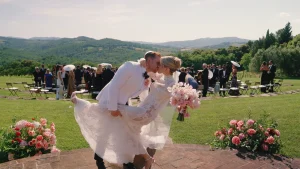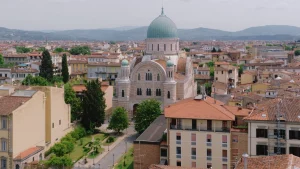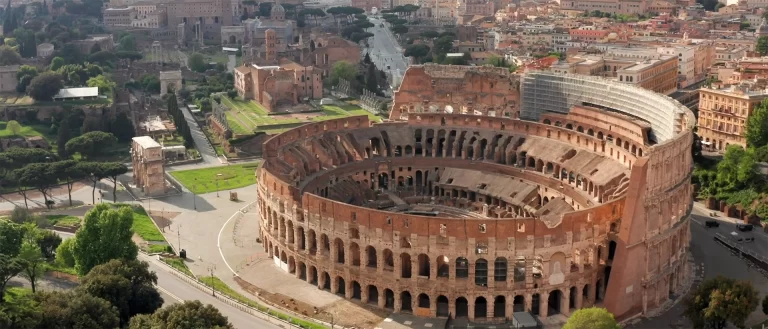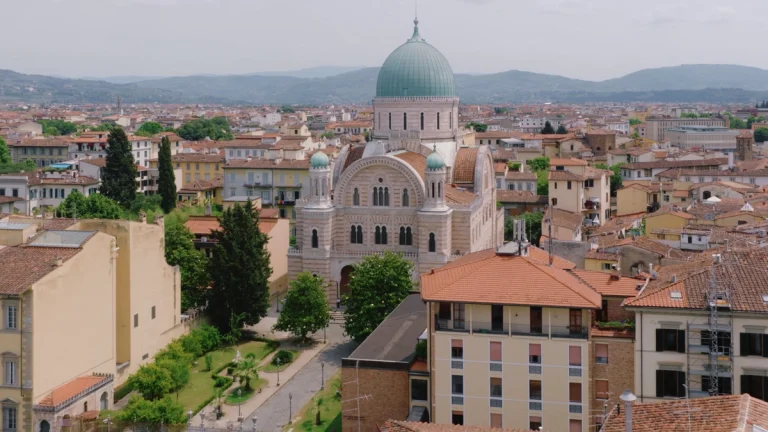Choosing the perfect location for your wedding in Italy begins with a deep reflection on the vision you have for your special day. Before diving into the search for available venues, it’s essential that you and your partner take the time to clearly define the atmosphere you wish to create. This process of self-reflection will be the compass that guides every decision you make moving forward and who knows, it might even turn out to be a romantic exercise in itself!

Italy, with its extraordinary variety of landscapes and cultures, offers an almost endless range of possibilities. There are the Tuscan vineyards, where the scent of Chianti mingles with the golden hues of sunset; the elegant, historic building in the heart of Florence, which house centuries-old masterpieces; and then there are the seaside locations like the Amalfi Coast, with its crystal-clear waters and the scent of lemons that fills the air.

Each venue brings not only a distinct aesthetic but also a unique emotional experience for you and your guests. A wedding in a farmhouse in Pugli will convey warmth and authenticity, while a celebration in a villa on Lake Como will evoke aristocratic sophistication. This stylistic clarity will become your most valuable filter when faced with hundreds of available options, allowing you to focus your time and energy only on those venues that truly reflect your shared vision.
Set a Realistic Budget
Talking about budget in the context of a wedding might feel a bit unromantic, but rest assured: it’s one of the most strategic decisions you can make right from the start. Italy offers venues for every price range, like hidden villages in the Marche countryside to the most exclusive villas on Lake Como, but the price differences can be dramatic and often surprising for those unfamiliar with the local market.

Costs vary based on several key factors you’ll need to consider in your calculations. The region you choose makes a big impact: getting married in Tuscany or on the Amalfi Coast generally comes with higher costs than equally charming but less touristy areas like Umbria or Puglia. Seasonality is another major factor: May, June, and September see peak pricing, while April and October can offer the same beauty at more accessible rates. Venue exclusivity also plays a major role: a private-use castle will have a very different price tag than a villa that hosts multiple events.

However, the real secret to effective budget planning is to think in terms of total cost, not just the venue fee. You’ll need to factor in catering, which in Italy can range from €60 to €200 per person depending on the quality and type of service. Accommodation for you and your guests is another important consideration, especially if you’re choosing a more remote location. Transportation – both to the venue and between locations during the event – can also significantly affect the overall budget. Finally, extras like dramatic lighting, customized floral arrangements, or wedding planner services can easily double your initial estimates if not accounted for properly in advance.
Consider the Region Carefully
Getting married in Italy, especially for couples traveling from the other side of the world, can feel a bit overwhelming at first. Our beautiful country may be small, but it’s incredibly diverse, so here are a few insights to help guide your decision. As mentioned earlier, choosing the Italian region for your wedding is a decision that will shape the entire experience, for both you and your guests. Every area in Italy offers a unique atmosphere that should reflect your identity as a couple.
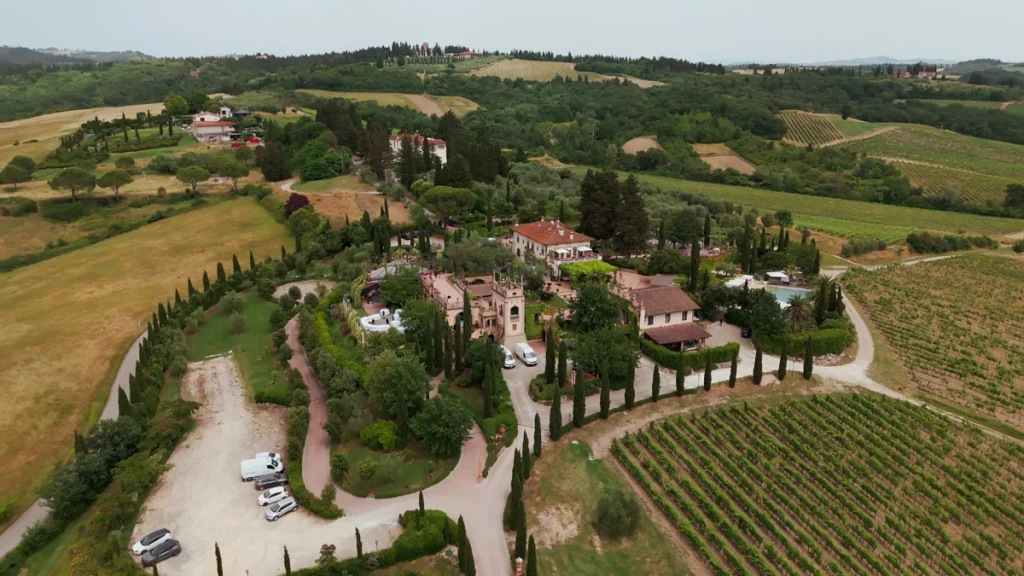
Tuscany remains the undisputed queen of international wedding tourism thanks to its timeless countryside charm. It strikes the perfect balance between rustic elegance and refined beauty, with its rolling hills lined with cypress trees, historic Medici villas, and centuries-old wineries that provide a truly fairytale setting. Umbria, often called the “green heart of Italy,” offers a more intimate and secluded alternative: its medieval towns like Assisi and Spello, gentle hills, and fortified castles create a sense of peace and spiritual richness. Both of these central regions benefit from a mild and favorable climate for much of the year.

The Amalfi Coast, in the region of Campania, offers breathtakingly dramatic views where the deep blue sea meets towering cliffs and the picturesque villages of Positano and Ravello create a scene straight out of a movie. Puglia, with its traditional masserie set among ancient olive groves and dotted with the iconic trulli, offers a more authentic experience rooted in Southern Italian tradition, perfect for those who seek warmth, genuineness, and a cuisine that celebrates the flavors of the land. In the next section, we’ll take a closer look at seasonal factors, to help you understand how to get the best out of the region you choose.
Read also: From Florence with Love: Begin Forever in Tuscany
Plan According to the Season
Seasonal planning for your Italian wedding requires a solid understanding of the country’s distinct climatic characteristics, which can vary surprisingly from one region to another and from one month to the next. Italy stretches over a thousand kilometers from north to south, crossing multiple climate zones that will significantly impact your wedding experience and the logistical choices you’ll need to make.

Summer weddings in Southern Italy – particularly in Puglia or along the Amalfi Coast – can become endurance tests if not carefully planned. July and August often see temperatures exceed 35°C (95°F), with humidity levels that make the air feel almost unbearable during the middle of the day. This calls for a complete rethink of wardrobe fabrics, scheduling sunset ceremonies, ensuring air-conditioned spaces for guests, and opting for lighter menus. On the other hand, Northern regions like Lombardy or Veneto can present unexpected weather even in late spring, with chilly evenings that may require heating solutions for outdoor spaces.

Seasonality deeply influences every aspect of your wedding. Floral availability shifts throughout the year: peonies bloom only in late spring, while sunflowers are a hallmark of the Tuscan summer. Natural lighting also varies significantly: a June wedding offers long, golden evenings, while an October event sees shadows lengthen by mid-afternoon. Your menu should adapt too: a truffle- and game-based feast is perfect in autumn but would feel overly heavy in the height of summer.

Each season brings its own unique advantages: spring offers soft colors and mild temperatures; summer guarantees clear skies and long evenings; autumn brings golden landscapes and exceptional seasonal produce; and winter can turn certain venues into magical fairytale settings, especially when touched by a light snowfall.
Think About Accessibility
The accessibility of your wedding venue is often overlooked during the early stages of planning, yet it can be the difference between a smooth, joyful celebration and a day filled with logistical stress, for both you and your guests. It’s essential to take a critical look at how practical it really is to reach your chosen location, especially if a significant number of guests will be coming from abroad or other parts of Italy.

Proximity to major airports is a key factor. A venue in Tuscany that is easily accessible from Pisa or Florence will provide a far more seamless experience than a remote village in the Umbrian hills that requires a two-hour, winding drive after landing. Similarly, access to high-speed rail lines can dramatically enhance convenience: getting married near cities like Florence, Rome, or Naples ensures your guests enjoy a comfortable and efficient journey.

Not all road infrastructure in Italy is created equal. While the main highways offer fast connections, many of the most charming venues are located on secondary or countryside roads, which can be challenging, particularly for elderly guests or those unfamiliar with Italian driving conditions. Some medieval castles or historic villas, though breathtakingly scenic, might require organized shuttle services or clear, detailed directions to ensure your loved ones don’t get lost on your big day.

You should also consider the availability of nearby accommodations. An isolated venue may force guests to travel long distances each day, whereas having hotels, B&Bs, or holiday rentals within a few kilometers can turn your wedding into a relaxed and convivial weekend getaway for everyone.
Evaluate Indoor and Outdoor Options
Italy enjoys a well-deserved reputation for its Mediterranean climate, but it would be unwise to plan your wedding without taking weather variability into account. Even in the sunniest southern regions, nature can deliver unexpected surprises, so and a well-thought-out backup plan can turn a potential disaster into an unforgettable memory for all the right reasons.

Evaluating your venue’s indoor and outdoor options should never be a superficial checklist. When visiting potential venues, specifically ask to see alternative covered areas and understand the logistics of transitioning in case of bad weather. Some historic villas feature frescoed halls that might actually be more breathtaking than your original outdoor setup. Other locations provide elegant marquees that preserve the outdoor feel while keeping your guests sheltered from the elements.

It’s crucial to assess not only the availability of alternate spaces but also their capacity, acoustics, lighting, and adaptability for floral and decorative setups. A garden with a pergola might seem charming, but could be completely unsuitable for a 50-guest ceremony during a sudden spring downpour. Likewise, an indoor hall might be ideal for the reception but feel too formal for the atmosphere you envisioned for your ceremony.

Transitional seasons like spring and autumn demand particular attention. April and May offer ideal temperatures but are prone to short, sudden storms, while September and October often bring “ottobrate” (beautiful late-summer days that can turn into cool, breezy evenings). Your venue should offer flexibility not only for your main events but also for key moments like the aperitif or the cake cutting, ensuring every part of your special day can unfold beautifully regardless of the weather.
Research the Venue’s Vendor Policy
One of the most delicate – and potentially problematic – aspects of choosing a wedding venue is understanding its specific policies regarding outside vendors. This issue is especially relevant in Italy, where many high-end venues – historic villas, luxury hotels, exclusive resorts, or destination-wedding specialists – operate with highly structured management systems that can significantly impact both your overall budget and the creative freedom of your event.
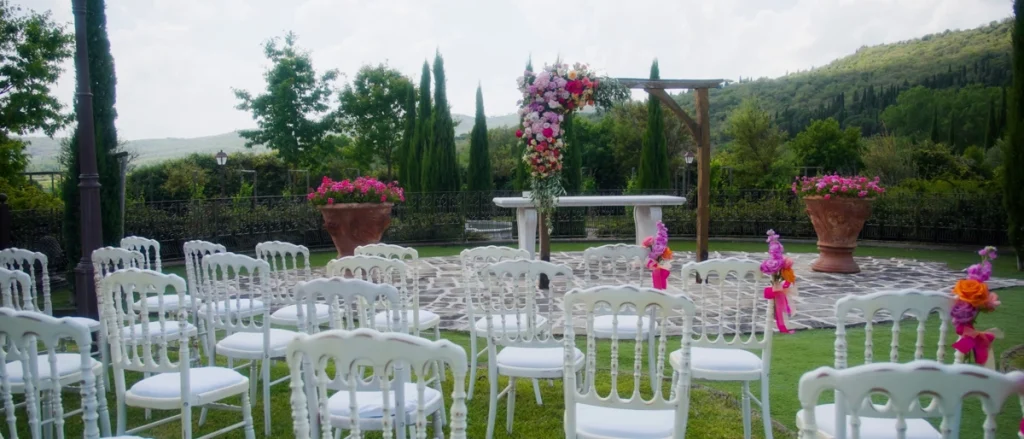
Historic villas and castles often work with carefully curated lists of preferred vendors. These professionals have proven experience in working within the architectural and conservation constraints of the property, are intimately familiar with the logistics of the space, and have established trusted relationships with the venue’s management. While this exclusivity ensures smooth operations, it can also result in higher costs and reduced flexibility in terms of aesthetic and culinary choices.

Luxury hotels, on the other hand, typically rely on their in-house teams, offering all-inclusive packages that cover catering, wedding planning, décor, and sometimes even photography and videography. While this approach guarantees a high standard of quality and seamless coordination, it may limit your ability to personalize the event and often comes with a premium price tag.

Venues that allow external vendors frequently have complex fee structures: access charges for non-affiliated vendors, security deposits to ensure adherence to venue rules, or requirements for specific liability insurance certifications. Choosing to work with local vendors, when possible, is often the most advantageous solution. These professionals not only know the venue intimately and have existing working relationships with the staff, but they also “speak the same language” – both literally and figuratively – making communication smoother and reducing the risk of misunderstandings during the planning process. Economically, eliminating travel, accommodation, and meal costs for vendor teams can lead to substantial savings on your overall budget.
Read also: Building the Ideal Wedding Team: Key Professionals for Your Big Day
Understand What’s Included
As you begin the search for your perfect wedding venue, we highly recommend paying close attention to the actual scope of services included in the offer. The distinction between a “full-service” venue and a “dry hire” venue can make a significant difference, not only in terms of final costs but also in the overall organization of your big day.

Full-service venues are often the most convenient choice for couples seeking a turnkey experience. These venues typically offer a comprehensive package that includes catering with customizable menus, event planning support with a dedicated wedding planner, floral and decorative arrangements, basic photography and videography services, and sometimes even musical entertainment. The main advantage of this solution lies in the streamlined process: you’ll work with a single point of contact who will coordinate all aspects of the event, greatly reducing your workload and the stress that can come with managing multiple vendors.

On the other hand, dry hire venues provide only the use of the space, giving you complete freedom – and with it, full responsibility – for choosing and coordinating all external vendors. This option may initially seem more budget-friendly, but it requires a considerable investment of time and energy to research and select caterers, florists, photographers, videographers, musicians, and wedding planners. However, it gives you maximum creative control over your wedding, allowing you to personalize every detail to reflect your individual tastes and budget.

It’s crucial to always request a detailed quote that clearly outlines which services are included in the base price and which incur additional charges. Some venues may market themselves as full-service, yet only include basic elements, charging extra for features you might assume are standard. Transparency at this stage will help you make accurate comparisons between venues and plan your budget realistically, avoiding unpleasant financial surprises later in the planning process.
Think of the Venue as the Backdrop to Your Wedding Story
When evaluating different options for your wedding, it’s essential to go beyond technical and logistical considerations. The venue you choose will inevitably become the permanent stage for your most treasured memories, the backdrop to the images and videos you’ll cherish for the rest of your lives. Every corner, architectural detail, and play of natural light will shape the visual atmosphere of your special day.

Scenic variety plays a key role in the richness of your photo and video reportage. An ideal venue should offer multiple settings that reflect the different moments of the celebration: lush gardens or panoramic terraces for pre-ceremony shots and aperitifs, intimate spaces for the emotional exchange of vows, and elegant halls or historic courtyards for the reception and party. This diversity allows your photographers and videographers to create a visually engaging narrative, avoiding the monotony of a single repetitive backdrop.

The quality and direction of natural light deserve special attention. Observe how the light shifts throughout the day: a west-facing terrace may offer breathtaking sunsets but be blinding in the afternoon, while an east-facing garden can bathe your morning photos in golden light yet fall into shadow by evening. Natural elements like pergolas, ancient trees, or reflective water features can create captivating light and shadow effects that greatly enhance your visual storytelling.

Above all, our biggest piece of advice is to choose a venue that in some way represents you, as individuals and as a couple. When there’s harmony between two people in love and the place where they choose to celebrate that love, the success of the event is almost guaranteed. And believe us: when you watch your wedding video, that sense of connection makes all the difference in the world. Beyond aesthetics and atmosphere, many couples today choose venues based on their personal values as well, such as eco-friendly venues that reflect a genuine commitment to environmental sustainability, making their special day also respectful of the planet.
Read also: The Top 10 Wedding Moments Every Videographer Should Capture
Ask About Restrictions and Timings
An often underestimated but absolutely crucial step in selecting your wedding venue is thoroughly checking all restrictions and regulations that could impact your celebration. Italy has a complex regulatory landscape that varies significantly from region to region and municipality to municipality, making careful investigation essential before making any final decisions.
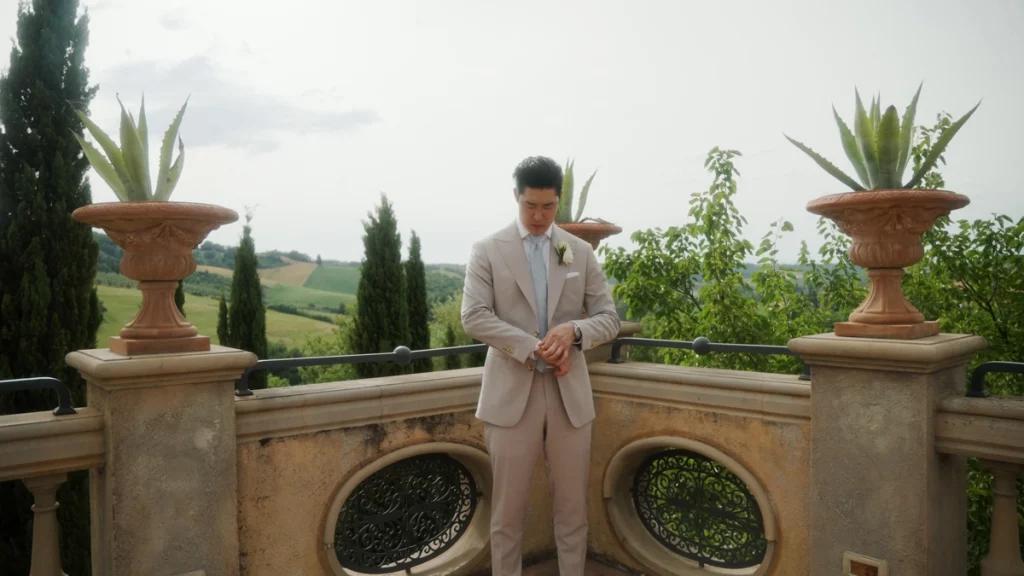
Noise restrictions are probably the most delicate aspect to consider. Many Italian historic centers have enacted strict noise ordinances that severely limit the hours during which amplified music can be played. These rules may ban music altogether after 10 p.m., or even 9 p.m. on weekends, which can affect the lively atmosphere typically expected at wedding receptions. Some venues, especially those in residential areas or near places of worship, may require installing sound limiters or using wireless headphones for guests after certain hours.

The situation becomes even more complex for historic venues – such as noble villas, castles, palaces, or deconsecrated convents – due to stringent cultural heritage protection laws. The local Superintendence for Cultural Heritage might impose specific restrictions on using certain areas, setting up temporary structures like gazebos or tents, or using artificial lighting that could damage frescoes or historic decorations. Some sites may completely forbid open flame candles, require the exclusive use of fire-retardant materials for décor, or limit the maximum number of guests for structural safety reasons.
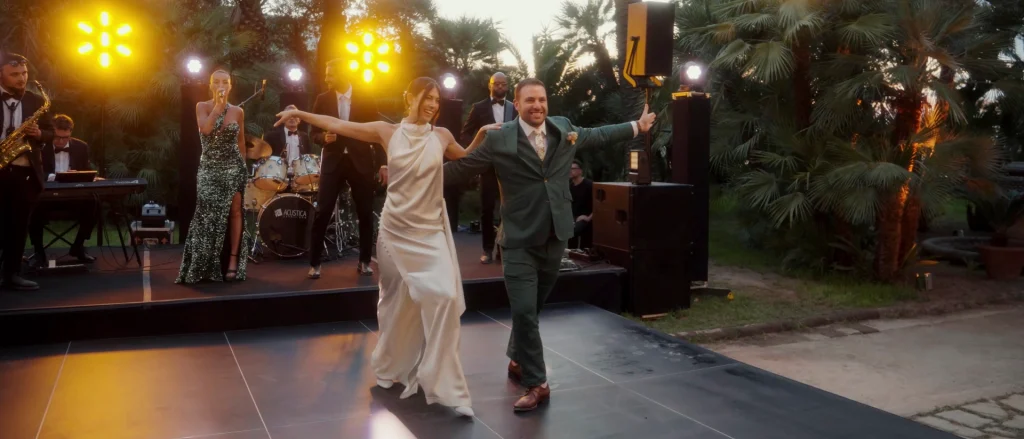
Regarding photography and videography, keep in mind that drone flights are prohibited in many areas of Italy for security reasons. So, if you want stunning aerial footage for your wedding video, pay special attention to these local regulations.



